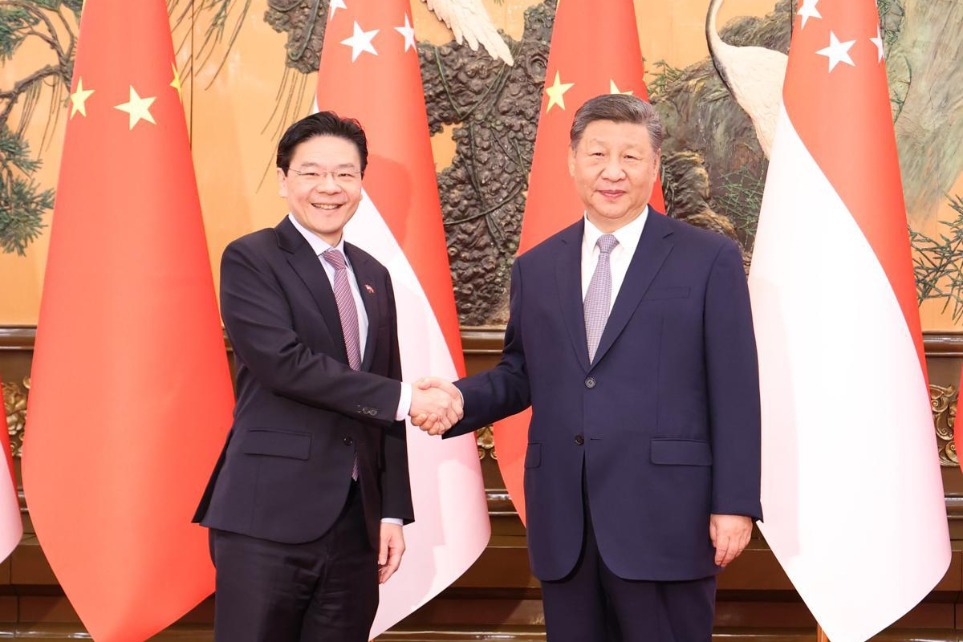Turning carbon neutrality vision into reality


China has announced that it would aim to peak its carbon dioxide emissions before 2030 and achieve carbon neutrality before 2060, which is an important commitment to align the country's emissions targets with the 26th UN Climate Change Conference of the Parties' global agenda to reduce the risks of climate change.
In fact, the Government Work Report, which Premier Li Keqiang submitted to the annual session of the National People's Congress early this month, says:"The action plan for peaking carbon emissions will be put into effect. To advance China's energy revolution and ensure energy supply, we will, based on our resource endowment, push forward the transformation toward low-carbon development, in accordance with overall planning and the principle of establishing the new before abolishing the old."
China's 2060 carbon neutrality pledge is expected to curb global temperature rise by 0.2-0.3 degrees Celsius by 2100 in comparison with its previous commitment under the Paris Agreement. This would help move the international community closer to achieving the Paris Agreement goal of keeping the global temperature increase to 1.5 C or less, relative to pre-industrial levels.
Net-zero emissions at a very fast pace
The key challenge lies in the fact that China has to start reducing carbon emissions at a relatively early stage of economic development and achieve net-zero emissions at a very fast pace.
China's climate pledge sets the path for peaking its absolute carbon emissions level at a per capita GDP of about $15,000, and it plans to reduce its net carbon emissions from peak to zero within 30 years. This is in sharp contrast to the US and the European Union, which had set their carbon emissions peaks when their per capita GDP were at a much higher level, and are thus aiming to achieve the transition from peak to zero at a more gradual pace.
The environmental Kuznets curve, which postulates an inverted-U-shaped relationship between pollution and development, suggests that environmental degradation worsens as an economy develops, but beyond a certain level of per capita income, adverse environmental trends begin to reverse. Unlike the EU and the US, which have already achieved their peak emissions level and are now on the down-hill part of the Kuznets curve, China's curve has yet to peak and hence, the targets are more challenging and the cost of transitioning to the zero-carbon path higher.
But as the Government Work Report says, the country "will advance the planning and construction of large-scale wind and photovoltaic power bases with supporting power sources that are adjustable, and boost the capacity of power grids to absorb electricity generated from renewable energy sources...promote R&D and application of green and low-carbon technology...and encourage the steel, non-ferrous metals, petrochemicals, chemicals and building materials industries to enhance energy conservation and reduce carbon emissions."
A clear road map key to net-zero emissions
The authorities have released a national action plan for carbon emissions to peak before 2030. This is a welcome step, and an extension of the plan for meeting the 2060 carbon neutrality target should be pursued. Based on studies of technical feasibility, the road map should define plausible pathways to decarbonize the Chinese economy, lay out a mitigation policy framework, set sectoral targets and strategies, assess the economic and social impacts of different net-zero paths, and identify important constraints and challenges that may arise in the process.
By linking long-term pledges with shorter-term targets and policy actions, the detailed road map will not only enhance the credibility of the government's climate change commitment and gain public confidence, but also serve as a policy anchor to guide the expectations of different economic agents-enterprises, consumers and local governments-in their planning and decisions. Also, the road map should be updated periodically to reflect evolving economic realities and technological development, and unexpected challenges.
To begin with, the coverage of the emissions trading scheme should expand to other high-carbon emissions sectors such as steel, cement, chemical products, and other heavy industries besides power plants.
In the longer term, the authorities could consider introducing auctions as an alternative to the current free allocation of allowances, and deepen the liquidity and enhance the robustness of the market by broadening the participant base and introducing derivative products such as carbon allowance futures.
A carbon tax should also be included as a major instrument in China's carbon mitigation policy toolkit. While an emissions trading scheme provides certainty in achieving emissions target, the traded carbon price can be volatile. In contrast, a carbon tax provides more certainty about future prices, which is important for facilitating business decisions on investing in green technologies and infrastructure.
Vulnerable groups need to be helped
Considering the possible adverse impact of a carbon tax on vulnerable groups, the government could implement the carbon tax in a revenue-neutral manner and introduce income transfers to low-income households and small and medium-sized enterprises. And "double dividends" can be achieved if the additional revenues were returned through reduction in other more distortionary taxes.
Besides, the authorities should complement their regulatory efforts with a more economy-wide, market-based mechanism. Actually, policy instruments such as energy intensity regulations, compulsory standards, and technological performance requirements have been widely used by the authorities to reduce carbon intensity in the economy.
In addition, national energy and carbon intensity targets have often been broken down into sectoral-level or provincial-level targets to ensure their enforcement.
The regulatory approach taken by the authorities has often yielded quick results. It can also better address sectoral and regional specificities. To complement the current approach, a more holistic, economy-wide carbon pricing could be adopted to lay a stronger microfoundation for China's low carbon transition. A market-based approach will likely incentivize households and enterprises to adopt greener behavior, and also equalize the marginal cost of decarbonization across usages, eliminating potential incoherence across sectoral policies and regional policies.
Need for flexible labor and product markets
Complementary structural reform is important for supporting the transition. Carbon neutrality implies a massive structural transformation of the Chinese economy. And flexible and adaptable labor and product markets, as well as efficient financial markets, can facilitate the reallocation of resources from high- to low-carbon activities.
Moreover, China's active participation in international cooperation and global coordination will help the country to boost the effectiveness of its carbon reduction and climate mitigation actions.
As a global public good, climate change mitigation should be achieved through globally coordinated policy actions, especially as the uneven pace of climate change mitigation across countries has raised concerns over the free-rider and unfair competition problems, which have led to the proposal of imposing a unilateral border carbon adjustment tax to address the problems.
Due to its limited coverage and scope, the current EU "border carbon adjustment" proposal is likely to have minimal implications for China's exports. However, if more and more advanced countries take border carbon adjustment measures and form a de facto special "climate club", as suggested by US economist William Nordhaus, the economic cost for China and other developing countries could be significant.
Therefore, China should consider participating in an international carbon price floor arrangement proposed by the International Monetary Fund to dissuade its major trade partners from taking any unilateral border carbon adjustment measures.
Furthermore, international cooperation and trade in clean technologies, which have the potential to bring important gains to China, should be included in the country's climate change strategy. And regional cooperation toward a more harmonized climate regulatory framework will help limit the adverse impacts of regulatory fragmentation on regional trade and investment.
Hoe Ee Khor is chief economist at the ASEAN+3 Macroeconomic Research Office. Fan Zhai and Suan Yong Foo are senior economists at the same office.
The views don't necessarily reflect those of China Daily.
If you have a specific expertise, or would like to share your thought about our stories, then send us your writings at opinion@chinadaily.com.cn, and comment@chinadaily.com.cn.































